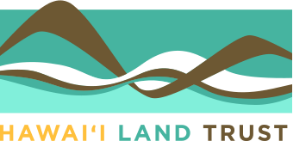Contemplating Ola in the Time of Keaweawe‘ulaaKāne
Aloha Dear ‘Āina Reader,
May I bend your ear for a mo‘olelo (story) moment? While ola (life, health, well-being) continues to be a focal point in these times, it also provides an opportunity to explore not only the etymology of health, but the prevailing character and atmosphere of these islands - the ways in which the Hawaiian body relates to the natural environment. Recognizing the reciprocal role we play in the life of eco-systems, we marvel today at how sacred nomenclature of Hawai‘i’s elemental phenomena capture this concept of wellness. Call it biomimicry, cultural ecology, or ola -- we are part of the wholeness of life.
I’d like to (re)introduce you to two important elements: Papa (our oldest strata) and Wākea (our most expansive spaces). This particular account tells of how the primeval pair came together to create the universe. So find yourself a comfy spot (I recommend one of HILT’s refuges as just the place), and let’s begin …
Wākea is the eldest son of Kahiko. He joins with Papa, who begets a calabash. Wākea throws the lid of the calabash upward to create the heavens, the meat and seeds create the sun, moon, and stars, the juice becomes rain, and the bowl becomes the land and sea. The delight in the contemplation of this mythic gourd image leaves us observing with wonder how our living Hawai‘i universe is expressed in the wholeness of a well-filled calabash.
Another image is the rounded shape of the calabash. If you find yourself at a HILT refuge gazing out to the horizon, your eyes take in the environment in a broader spherical shape -- this is panoramic vision. According to the mo‘okū‘auhau (genealogy) of our eyes, they first evolved to adjust one’s nervous system and internal states. The capacity to see is secondary and, finally, there is the eye’s ability to communicate. By keeping one’s head and eyes stationary, one can dial the gaze out to a more expansive Wākea-like state, triggering a neurobiological relaxation response integral to well being and to the learning process.
Adult neuroplasticity, the brain and nervous system’s ability to change in response to an experience, requires individual choice to rewire one’s neurons. An Hawaiian view of healing encouraged one to be active in one’s own healing. As the time of Kū transforms to Kāne this Keaweawe‘ulaaKāne (Summer Solstice), we can use these energies of transformation to change ourselves and society. In doing so, we also experience the ola possible in an ‘umeke kā‘eo, a well-filled mind.
— Leahi Hall
